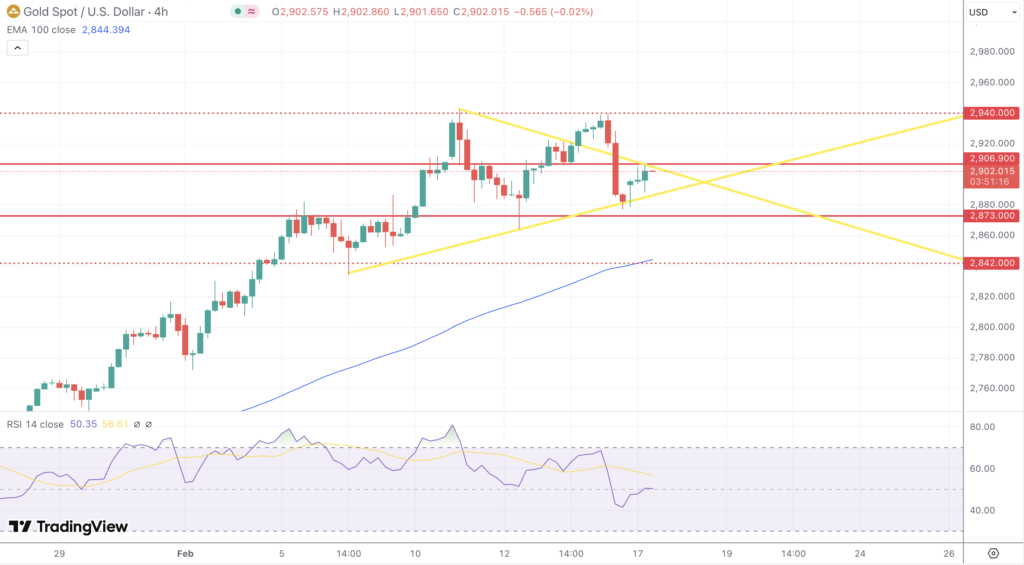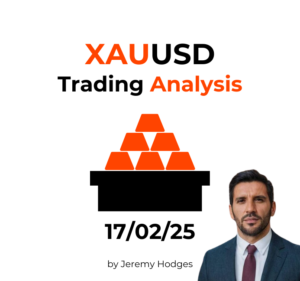Key Takeaways
- Record Highs Achieved: Gold reached a peak of $2,943 per ounce amid heightened trade tensions.
- Technical Indicators: A breakout above the symmetrical triangle suggests a potential target of $3,098, with support levels at $2,873 and $2,842.
- Economic Influences: Declining U.S. retail sales and increased central bank purchases, especially by China, are bolstering gold’s appeal.
- Outlook: While the $3,000 mark is within reach, market participants should monitor economic indicators and geopolitical developments closely.
Market Dynamics and Recent Performance
Gold prices have recently experienced significant volatility, influenced by escalating global trade tensions and economic uncertainties. The announcement of a 25% tariff on steel and aluminum imports by President Trump has intensified fears of a trade war, prompting investors to seek refuge in safe-haven assets like gold. This sentiment propelled gold prices to a record high of $2,943 per ounce earlier this month.
However, the market has also seen periods of consolidation and minor pullbacks. As of February 17, 2025, gold is trading comfortably around $2,910 per ounce, reflecting a balance between bullish momentum and profit-taking activities.
Technical and Fundamental Influences
From a technical perspective, gold’s recent ascent has been marked by the formation of a symmetrical triangle pattern, which it successfully broke above, indicating continued bullish momentum. The measured move technique suggests a potential price target of approximately $3,098, derived from adding the height of the preceding trend ($502) to the breakout point at $2,596.
Key support levels to monitor include $2,873 and $2,842 aligning with the 100-period EMA in the 4 hours chart. These levels may attract buying interest during potential pullbacks.

Fundamentally, the market is reacting to mixed economic indicators. The U.S. retail sales report for January showed a 0.9% decline, significantly worse than the anticipated 0.1% drop, raising concerns about consumer demand and economic growth. This downturn in retail activity has bolstered expectations for potential interest rate cuts by the Federal Reserve, which could further enhance gold’s appeal as a non-yielding asset.
Additionally, central banks, particularly from emerging markets like China, have increased their gold purchases, contributing to the upward pressure on prices. This trend reflects a strategic move to diversify reserves amid global economic uncertainties.
Looking Forward
Analysts project that if current conditions persist, gold prices could test the psychological $3,000 threshold in the near term. Factors such as ongoing trade disputes, dovish monetary policy signals from central banks, and sustained demand from institutional investors are likely to support this upward trajectory. However, traders should remain vigilant for potential corrections, especially if economic data surpasses expectations or if there are developments leading to a de-escalation in trade tensions.

